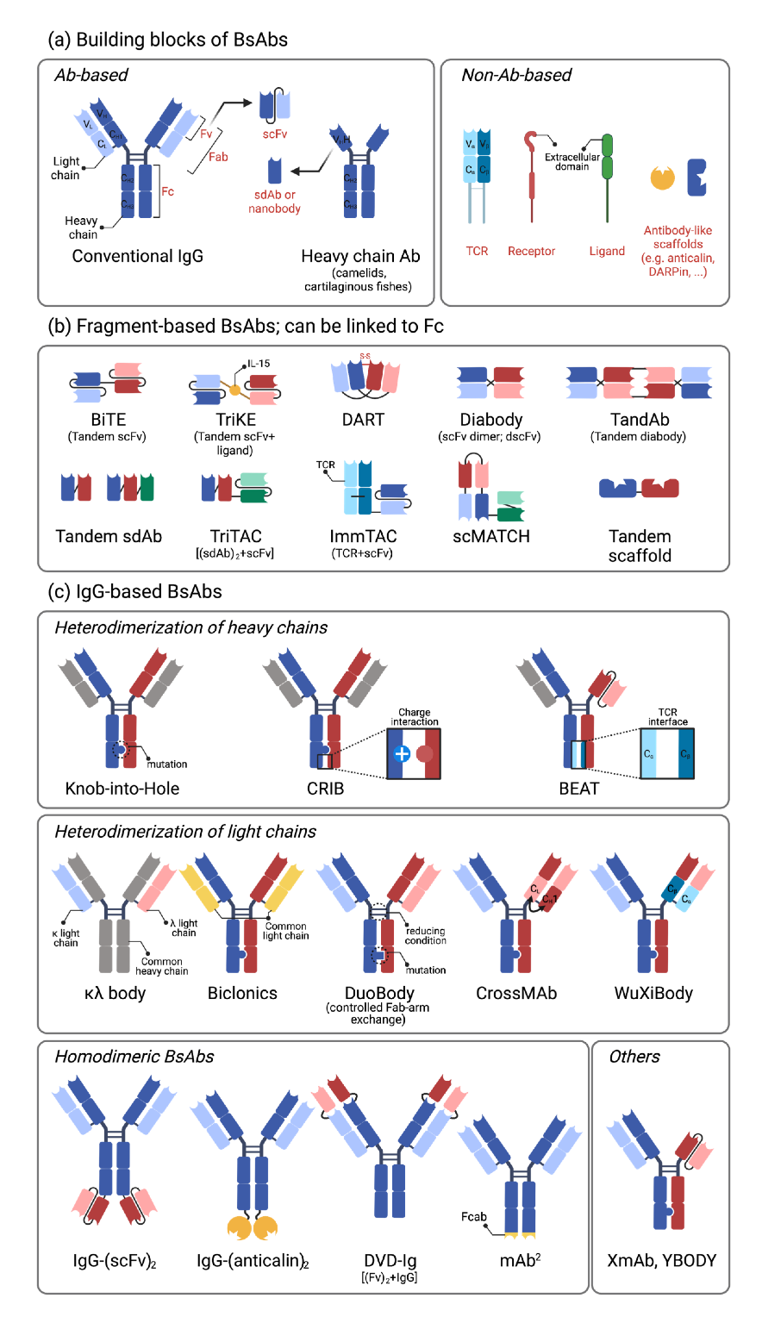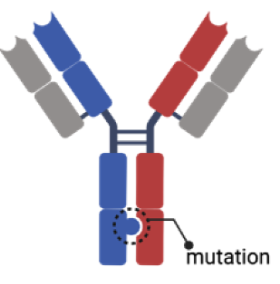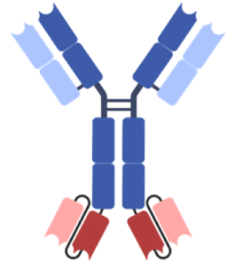Bispecific Antibody Generation
 Fig.1 The building blocks and formats of bispecific antibodies.1 As a leading biotech company, Creative Biolabs has extensive experience in the development of therapeutic antibodies. Our unique combination of comprehensive services allows us to guide you through antibody drug discovery challenge from target selection to clinical candidates. Currently we offer bispecific antibody generation services for various target categories, as well as antibody characterization and lead optimization.
Fig.1 The building blocks and formats of bispecific antibodies.1 As a leading biotech company, Creative Biolabs has extensive experience in the development of therapeutic antibodies. Our unique combination of comprehensive services allows us to guide you through antibody drug discovery challenge from target selection to clinical candidates. Currently we offer bispecific antibody generation services for various target categories, as well as antibody characterization and lead optimization.
Bispecific Antibody Structure and Formats
Broadly speaking, BsAbs fall into two categories - those with Fc regions and those without Fc regions. The advent of recombinant DNA methods has produced a series of recombinant BsAbs that have now produced more than 50 different forms. Several examples of formats in the schematic on the right are currently in clinical development or have been approved for cancer treatment of various bispecific antibodies (bsAbs).
Recombinant Bispecific Antibody Approaches
Overview about how our scientists design strategies for producing different bispecific antibodies (bsAbs):
-
Generation of symmetric bsAbs by assembly of antibodies with unmodified heavy chain constant regions
-
Using a heavy chain modified to force heterodimerization (e.g., using a knob to enter the pore strategy) results in an asymmetric bsAb
-
Fusion of two different antibody fragments to non-immunoglobulins
-
bsAb can also be produced by chemical conjugation of two different antibodies
Knobs-into-holes BsAb IgG
The production of bivalent BsAbs is made easier by developing a "knob to well" technique in which H chain heterodimerization is forced by introducing different mutations into two CH3 domains, resulting in asymmetric antibodies. Specifically, the "knob" is mutated to one HC and a "hole" mutation is produced in the other HC to promote heterodimerization.
|
Here, the direct addition of a new antigen-binding portion to the full-length IgG results in a tetravalent fusion protein. Examples include IgG C-terminal scFv fusions and IgG N-terminal scFv fusions.
|
Diabody-Fc fusion protein
This involves replacing the Fab fragment of IgG with a bispecific diabody (a derivative of scFv).
|
Double variable domain IgG
Here, the VL and VH domains of a specific IgG are fused to the N-terminus of VL and the VH of IgG of different specificity by a linker sequence, respectively.
|
Creative Biolabs Expertise
Our experts have more than 10 years of experience in the development of therapeutic bispecific antibodies as well as diagnostic antibodies. Our cutting-edge hybridoma development and phage display platforms produce the most comprehensive list of antibody products and extensive services portfolio. We also offer specialized antibody discovery and engineering services, including phage display library construction, immune library, engineered antibody lead production and antibody sequencing.
-
Hybridoma development includes antigen design, immunization, cell fusion, hybrid cells selection, isolation and selection of the best monoclones by ELISA or in target application.
-
Phage display is based on diverse high-quality naive libraries and can adapt to each of your projects in a short turnaround time. Importantly, it can overcome immunogenicity and can test high diversity of variants.
-
Immune library provides higher affinity binders than the naive library and more antibodies against the antigen of interest, which is ideal for small and modified antigens. Any kind of animal species are available.
-
Antibody sequencing is critical for the discovery and development of therapeutic antibodies. We offer variable region sequencing, variable plus leader region sequencing, full-length heavy and light chain sequencing.
-
B cell sorting can not only screen a large numbers of B-cells from immunized animals but also identify rare antibodies with the biological activity of interest, including single B cell screening, cloning and in vitro expression.
Let us support your therapeutic antibody lead generation project and identify the most promising hit compounds for your drug candidates. Feel free to contact us for project quotations and more detailed information.
Reference
-
You, Gihoon, et al. "Bispecific antibodies: a smart arsenal for cancer immunotherapies." Vaccines 9.7 (2021): 724.
For Research Use Only | Not For Clinical Use


 Fig.1 The building blocks and formats of bispecific antibodies.1
Fig.1 The building blocks and formats of bispecific antibodies.1



 Download our brochure
Download our brochure